Pink Rot On Palms: Tips For Treating Palms With Pink Rot Fungus

Pink rot fungus, also known as Gliocladium blight, is a palm tree disease that infects damaged or weakened palms. Like many fungi, it is easier to prevent than it is to treat. Here are some tips on dealing with pink rot on palms.
Pink Rot Fungus in Palms
You won't see a healthy, robust palm tree planted in just the right place with pink rot fungus. Called an opportunistic fungus, pink rot likes to invade a plant that is already weakened by poor conditions or injuries. Here are a few situations that can lead to pink rot on palms:
- Palms that don't get the right amount of sunlight
- Palms planted too deeply or not deeply enough
- Soil that is wet, poorly drained or compacted
- Too much, too little, or the wrong type of fertilizer
- Cold weather damage
- Palms poorly suited to the area
In addition to these environmental conditions, wounds can leave a palm susceptible to pink rot. Pruning away old leaves too soon creates a wound that serves as an entry point for disease. Remove leaf bases during warm, dry weather and only if they come away easily. Wounds caused by freeze damage and landscape maintenance injuries can also lead to pink rot.
Preventing Pink Rot Disease in Palm Trees
Make sure the soil drains freely before planting palms. To test the soil drainage, dig a hole about a foot (31 cm.) deep and fill it with water. Let the water drain completely and then immediately fill it again. The water level should drop between 1 and 6 inches (2.5-15 cm.) per hour. Will the palm get the right amount of sunlight at the proposed site? The amount of sunlight or shade the tree needs depends on the species, so check the growing information on the plant tag. If the tree isn't just right for the location you have in mind, consider another type of palm or a different site. Fertilize palm trees with a special fertilizer designed for palms. Palm fertilizers contain the high concentrations of trace elements that palms need. Follow the package instructions regarding the amount of fertilizer to use and the frequency. Make sure your climate is right for the palm you choose. If temperatures drop too low for the species, the resulting injury can encourage pink rot. A local nursery can help you find the right palm for your area.
Treating Palms with Pink Rot
The first step in treating the disease is to correct the stress condition that brought it on. If you can't change the condition in the tree's current location, you'll have to decide whether you are willing to continue battling pink rot. If not, you may have no choice but to remove the tree and replace it with one better suited to the location. There are a couple of fungicides that can help treat pink rot disease in palm trees. You should consider fungicides a temporary measure to help restore the tree while you correct the cultural conditions. Look for fungicide treatments containing thiophanate methyl and mancozeb. Follow the label instructions and use these pink rot palm treatments on the area of infection. You can also use them as a preventative measure to treat wounds and after pruning.
Gardening tips, videos, info and more delivered right to your inbox!
Sign up for the Gardening Know How newsletter today and receive a free download of our most popular eBook "How to Grow Delicious Tomatoes."

Jackie Carroll has written over 500 articles for Gardening Know How on a wide range of topics.
-
 Clever Vertical Vegetable Garden Ideas For Small Spaces – 7 Ways To Save Space
Clever Vertical Vegetable Garden Ideas For Small Spaces – 7 Ways To Save SpaceShort on garden space? Learn some vegetable garden ideas for small spaces that are fun and easy.
By Mary Ellen Ellis
-
 26 Different Types Of Orchids – With Pictures & Information
26 Different Types Of Orchids – With Pictures & InformationDiscover stunning orchid types to grow in your home and garden – from easy beginner varieties to rare and exotic species that are the preserve of experts.
By Melanie Griffiths
-
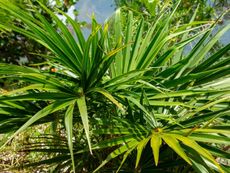 Florida Thatch Palm Facts – How To Grow Florida Thatch Palm Trees
Florida Thatch Palm Facts – How To Grow Florida Thatch Palm TreesGrowing Florida thatch palms is not difficult in the right climate. If these trees interest you, read on for more Florida thatch palm facts.
By Teo Spengler
-
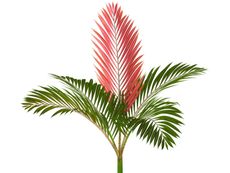 Red Leaf Palm Information – Learn About Growing Flame Thrower Palms
Red Leaf Palm Information – Learn About Growing Flame Thrower PalmsRed leaf palms are exotic and beautiful trees with leaves that grow in scarlet. If you’re thinking of growing these trees, click here for more information on red leaf palm care.
By Teo Spengler
-
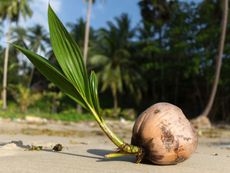 Palm Tree Seed Germination: What Does A Palm Tree Seed Look Like
Palm Tree Seed Germination: What Does A Palm Tree Seed Look LikePalm tree seed germination is not a matter of weeks but months or even years. Click here for more information on growing palms from seed.
By Teo Spengler
-
 Feeding A Palm Tree: Learn How To Fertilize Palms
Feeding A Palm Tree: Learn How To Fertilize PalmsPalm trees are planted as specimen plants for their exotic, tropical look. However, palm trees have high nutritional demands and the calciferous, sandy soil they’re normally grown in cannot always accommodate these needs. Click here to read more about fertilizing palm trees.
By Darcy Larum
-
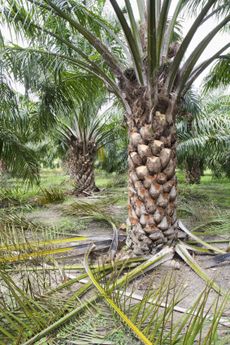 Pruning Palm Plants: Tips On Cutting Back A Palm Tree
Pruning Palm Plants: Tips On Cutting Back A Palm TreeCutting back a palm tree will not make it grow faster. This myth has caused gardeners to do extensive palm tree pruning that doesn't help and can hurt the tree. If you want to know how and when to prune a palm tree, this article will help.
By Teo Spengler
-
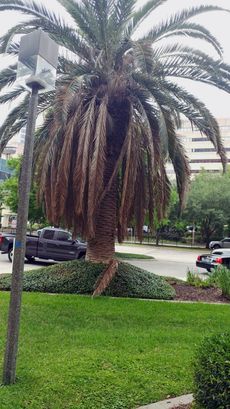 Palm Tree Dropping Fronds: Can You Save A Palm Tree Without Fronds
Palm Tree Dropping Fronds: Can You Save A Palm Tree Without FrondsThere are a number of reasons for palm tree fronds falling off, from natural "cleaning" to damaging cultivation, disease, and pest issues. If there are no fronds on a palm tree, the plant may be in real trouble but it is possible to still save it. Learn more here.
By Bonnie L. Grant
-
 What Is Lethal Yellowing Disease: Learn About Lethal Yellowing Of Palms
What Is Lethal Yellowing Disease: Learn About Lethal Yellowing Of PalmsLethal yellowing is a tropical disease that affects several species of palm. This disfiguring disease can devastate landscapes in South Florida that rely on palms. Find out about lethal yellowing treatment and detection in this article.
By Jackie Carroll
-
 Palm Tree Fusarium Wilt: Learn About Fusarium Wilt Treatment For Palms
Palm Tree Fusarium Wilt: Learn About Fusarium Wilt Treatment For PalmsFusarium wilt is a common disease of ornamental trees and shrubs. Palm tree Fusarium wilt comes in different forms but is recognizable by similar symptoms. This article will help with its identification and treatment.
By Bonnie L. Grant